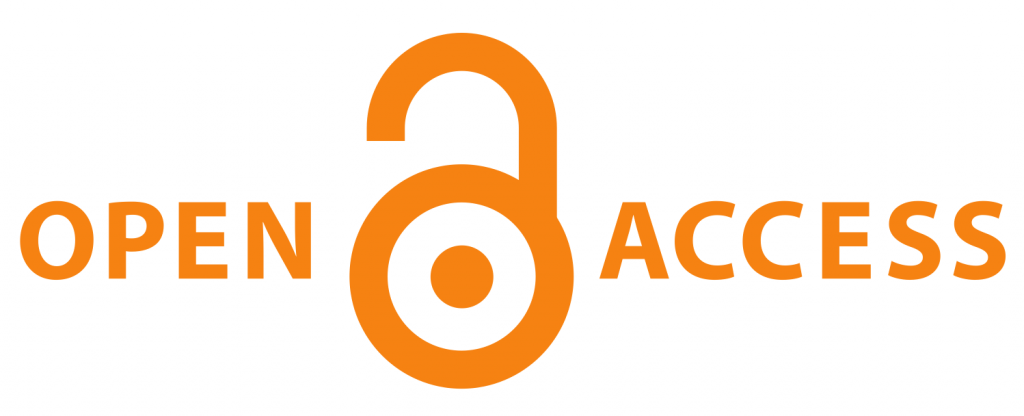Learning Outcomes of the Usage of E-learning Systems in TVET during COVID 19 Pandemic: The Case Study of Kenya Technical Trainers College, Kenya
Abstract
Learning outcomes is a key concept in the design of e-learning system usage in Technical and Vocational Education and Training (TVET). The COVID-19 pandemic has introduced uncertainty into major aspects disrupting the education sector landscape limiting students’ ability to access learning across the country, which greatly affected their learning outcomes. In response to the Covid-19 pandemic, there are significant shifts towards e-learning usage across the education sector to enhance trainee equality, inclusivity, transferability and recognition of qualifications at different levels to achieve better future learning outcomes. Therefore, the paper focuses on the learning outcomes of the usage of e-learning systems in TVET during COVID-19 Pandemic with an objective to establish the trainee's learning outcomes in the e-learning system adoption and use in the TVET system. A case study of Kenya Technical Trainers College (KTTC) was adopted with the target population of 118 school-based advanced diploma technical teacher business education trainees. The objective of the study was to determine the trainee's learning outcomes from e-learning system adoption and use in enhancing trainee equality and inclusivity in the TVET system in the era of a COVID 19 pandemic. The study employed a descriptive survey design. Questionnaire as the primary data collection instrument was employed to a sample of 91 school-based advanced diploma technical teacher business education trainees, analyzed quantitatively and qualitatively, and presented using frequencies in tabular form. The study found out that while trainees appreciated learning that leveraged appropriate e-learning technologies as certainly desirable, it did not necessarily affect trainees learning outcomes. The study concluded that learning assistance outcomes and academic performance outcomes are not certainly influenced by e-learning system adoption and use in the TVET system. The study recommended that the increased usage of e-learning systems might not lead to more effective learning outcomes, thus, efforts should be put into designing courses utilizing e-learning systems so that the trainees can learn effectively to achieve their learning outcomes.
Article Views and Downloands Counter
References
Alhumaid, K., Ali, S., Waheed, A., Zahid, E., & Habes, M. (2020). COVID-19 and eleaming: perceptions & attitudes of teachers towards e-leaming acceptance in the developing countries. Multicultural Education, 6(2), 100-115.
Dhawan, S. (2020). Online learning: A panacea in the time of the COVID-19 crisis. Journal of Educational Technology Systems, 49(1 ), 5-22.
Fairlie, R., & Loyalka, P. (2020). Schooling and COVID-19: Lessons from recent research on EdTech. npj Science of Learning, 5(1 ), 1-2.
Gikas, J., & Grant, M. M. (2013). Mobile computing devices in higher education: Student perspectives on learning with cell phones, smartphones & social media. The Internet and Higher Education, 19, 18-26.
Goel, V. P (2010), Technical and vocational education and training systems in India, for sustainable development. Unpublished Research Paper, UNEVOC Unesco.
Habes, M., Salloum, S. A., Alghizzawi, M., & Mhamdi, C. (2019). The Relation between social media and students' academic performance in Jordan: Y ouTube Perspective. International Conference on Advanced Intelligent Systems and Informatics, 382-392.
Islam, A. N. (2011). Students' e-Leaming system usage outcomes: A study with a learning management system. In Conference one-Business, e-Services and e-Society (pp. 255-268). Springer, Berlin, Heidelberg.
Islam, A. N. (2012). Understanding e-leaming system usage outcomes in hybrid courses. In 2012 45th Hawaii International Conference on System Sciences (pp. 118-127).IEEE.
Kathula, D., N. (2020). Effect of COVID-19 Pandemic on the education system in Kenya.
Journal of Education, 3( 6), 31-52.
Kemp, N., & Grieve, R. (2014). Face-to-face or face-to-screen? Undergraduates' opinions and test performance in classroom vs. online learning. Frontiers in psychology, 5, 1278.
Krejcie, R. V. & Morgan, D. W. (1970) Determining sample size for research activities. Educational and Psychological Measurement, 30, 607-610.
KTTC (2021). Kenya Technical Trainers College Prospectus. https://kenyapen.com/kenyatechnical-trainers-college-kttc-prospectus/
Latifah, A. L., & Thirumeni, T. S. (2016). Students' learning outcomes in online courses: Continual quality improvement. Commonwealth of Learning, Pan-Common (2010).
Lawson, T. E. (1974). Effects of instructional objectives on learning and retention. Instructional Science, 3(1 ), 1-21.
Leidner, D. E., & Jarvenpaa, S. L. (1995). The use of information technology to enhance management school education: A theoretical view. MIS Quarterly, 265-291.
Lesch, S., & Brown, G. (2012). Leaming outcomes learning achieved by the end of a course or program knowledge-skills-attitudes. National Institute for Learning OutcomesAssessment.
Copyright (c) 2022 Africa Journal of Technical and Vocational Education and Training

This work is licensed under a Creative Commons Attribution-NonCommercial-ShareAlike 4.0 International License.
Copyright Notice Copyright of published articles is held by AfriTVET. No limitation will be placed on the personal freedom of authors to copy or to use in subsequent work, material contained in their papers. Please contact the Publisher for clarification if you are unsure of the use of copyright material. Apart from fair dealing for the purposes of research and private study, or criticism and or review, this publication may only be reproduced, stored or transmitted, in any form or by any means, with the prior permission in writing of the Publishers.


